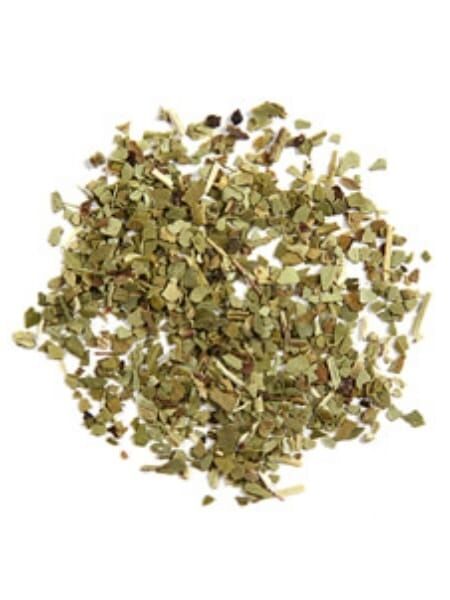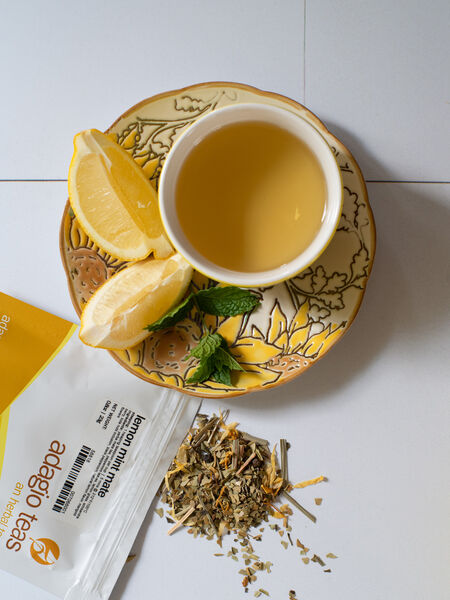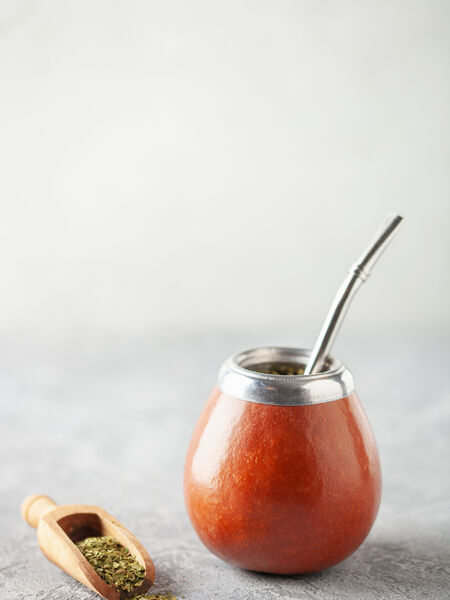Yerba Mate



Yerba Mate: The Drink of the Gourds
Yerba mate is the national drink of Argentina, Paraguay, and Uruguay. More popular than coffee, chocolate, and true tea combined, it boasts more than 300,000 tons produced every year with a value of more than $400 million. Other South American countries like Bolivia, southern Brazil, and Peru also drink yerba mate and it has gained some favor in the Middle East and here in the U.S.
Most yerba mate is grown from three of the more than 280 species of the South American holly tree and has either light purple or white stems and thick, waxy green leaves with either smooth or dented edges. The tree is colloquially called caa' or caa'-y by native tribes and the Ilex paraguariensis (named by the Spaniards) is the most common species and grows primarily in Argentina, Uruguay and Paraguay.
The finest yerba mate is shade grown in the subtropical rainforest, sheltered from direct sunlight to produce dark, hunter green leaves rich with flavor and nutrients. Seeds are planted in the shade of taller trees and the leaves and stems are harvested and dried by hand. After a flash heating process which preserves nutritional properties, the leaves and stems are dried at low temperatures and aged in cedar chambers for up to one year which produces a smooth, rich flavor.
"Yerba" means herb, and "mati," a Quichua tribal word for herb cup, evolved into "mate" to become "Yerba Mate" (MAH-tay), a grassy invigorating brew. Culturally, yerba mate requires specific accoutrements and protocol to enjoy it, and is part of a communal ceremony. The tea is brewed and served in a gourd and it is sipped through a filtered metal straw called a bombilla.
Yerba Mate's Healthful Properties
Because of its healthful properties, the yerba mate plant has provided a boon to native tribes, including the Arche Guayaki and the Guarani, who often became ill or even died from sickness or the deprivation of malnourishment during times of drought or famine.
Yerba mate's health benefits are actually fairly similar to that of true tea from the Camellia sinensis bush. Like true tea, it contains considerable amounts of theophylline, theobromine, and caffeine so moderation is advised. It is also has high in minerals such as calcium, manganese, iron, selenium, potassium, magnesium, phosphorous, and zinc, plus 15 amino acids and antioxidants. Among its most healthful compounds are vitamins A, C, E, B1, B2, B3 (niacin), and B5.
The Gourd
Gourds are the container or cup from which one drinks yerba mate. They can be beautifully decorated, trimmed in silver, or plain. For those who want a simpler utensil to use, ceramic versions of gourds are now available but are hardly the authentic way to drink yerba mate.
Most traditional gourds are made from the fruit of the gourd vine known as iagenaria vulgaris (or from the cucurbitaceous families). Sizes and shapes vary. Dark brown or grey stains are natural marks (they characterize the plant) and are not blemishes.
The names of gourds vary, too, and they're known as cabaca, calabaza, cuia, or porongo. Never put boiling water into a natural gourd. That could crack the gourd, burn your hands or mouth, and absolutely ruin the taste of the yerba mate. Keep the water temperature to a cool 150 degrees F. It is also much more delicate than it looks, so handle gently and avoid putting it down heavily or worse, dropping it, as it will crack easily.
Some people fill any new gourd with hot water and allow it to sit for a day in a well-ventilated area. The next day, pour the water and your gourd is now "cured."
Brewing Yerba Mate
One can crush or grind a large quantity of leaf then soak it in cold water then add hot water over and over again until the flavor dissipates. Brewing can be done in a French press or a traditional coffee pot or espresso maker dedicated to yerba mate. Yerba mate can be served hot or cold. Some additions are lemon or mint, mil or honey or a combination of several of these.
In Paraguay, cold yerba mate is known as terere', always infused with herbs, often mint or a combination of many herbs and served in a guampa, a hollowed out natural horn from a cow or bull. The horn is sometimes fashioned into a tall cup; either way, terere' is drunk through a bombilla. The yuyeras or herbalists in Paraguay are famous for their use of yerba mate for the base of herbal remedies or remedies. First they steep mate in the gourd, then they steep the medicinal herbs in water that was used to prepare mate. The remedies which have been used for centuries are said to promote balance, improve circulation and enhance the healing power of the medicinal herbs in the recipes.
To use the gourd and bombilla:
- Cure a gourd by gently scraping the inside of it with the tip of the bombilla to rid it of seed flesh or gourd particles that would otherwise compromise the flavor of the herbal tea.
- Prepare the tea by crushing the leaves then put a heaping teaspoon or more into the gourd.
- Slowly shake the gourd so the leaves are on one side, leaving an area open on the other side
- Put the bombilla into the gourd, filtered end down.
- Gently pour a little cold water into the open area to moisten the mate leaves (and protect the flavor and nutrients from leeching out). Keep tilting the gourd until the leaves have absorbed the water
- Add hot water, 150F, until just below the top of the leaves. Sip all the liquid, then add more hot water
The first few rounds will be strong and then the flavor will be milder with each subsequent drink. The pour-pass-sip routine of serving goes on until your friends have had their fill, usually 15-20 times. Always take care not to move the bombilla or disturb the yerba mate leaves. When the drinking is completed, empty the liquid from the gourd completely, rinse it with clean cold water, then scrape out the gourd with the bombilla to rid it of any detritus from the leaves. Place the gourd upside down in a dish rack to thoroughly dry it. (If moisture remains the gourd can develop mold.)
Protocol Tips
The first step to tomenos mate (drinking yerba mate with friends) is for the host (cebador) to drink the first one or two gourd-fulls, testing to insure a smooth taste. The gourd is refilled with water and passed counter clockwise with the straw filter or bombilla facing the recipient. Each person drinks the entire gourd full as the saying goes, "you share the vessel not the liquid." The gourd is returned with the bombilla facing the cebador and the gourd is refilled with hot water and continues until the mate is flat (lavado). For those reticent to share bombillas, it is fine to drink from your own separate gourd.
Another method is to fill the gourd about two-thirds full of hot water and place the bombilla in the water, resting at an angle against the top of the gourd. Add the mate leaves on top of the water where they will form a mound. Poke about a one-half inch through the mound of leaves on the opposite side where the bombilla is resting. The leaves will eventually sink as you continue to sip and re-fill your gourd.
Traditions and Legends
The Guarani tribe is believed to be the first to use yerba mate as a beverage. As the legend goes, the Goddesses of the Moon and the Cloud visited Earth one day, turning into two beautiful women. While walking the beautiful land, they were suddenly approached by a fearsome jaguar. Fortunately, an old man saw the potential for attack and shot the jaguar with an arrow. Grateful for their rescue, the women promised the man a gift honoring his friendship, not revealing to him that they were goddesses and needed to return to the moon and the cloud. A few days later, the old man noticed a beautiful plant outside his cabin door, and plucked a few fragrant leaves and set about to brew them in water. The drink was delicious, grassy and sweet and left him invigorated and feeling quite alert despite his age. He began to share this with his neighbors and they too felt wonderful drinking this beverage. Soon, circles of people gathered with the old man daily, and the beverage was named the "drink of friendship."
Cowboys (gauchos) of the Pampean plains call their yerba mate brew "liquid vegetables". At night, they will sit around the campfire (fogon) and sip yerba mate, passing the gourd around, relaxing from their labor, speaking quietly, cementing the camaraderie of working days on end with the same crew.
 teaclass
teaclass
